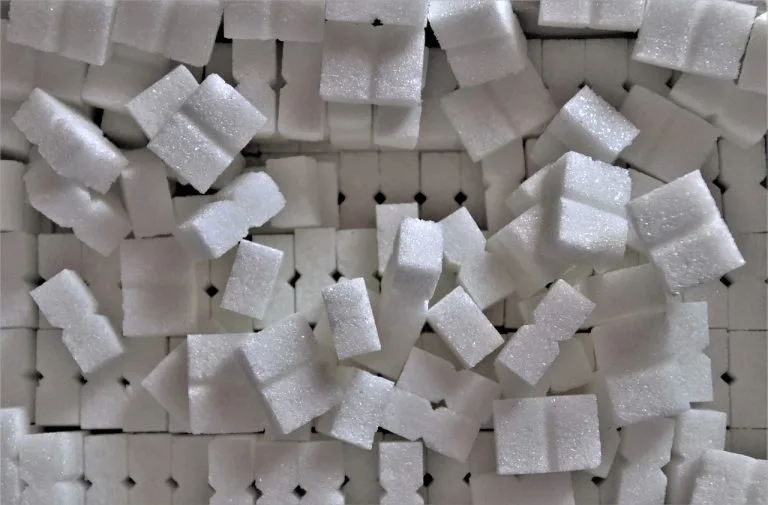Quick Summary
- Sugar futures on both the NY and London exchanges saw declines, with NY sugar hitting a 5-year low and London sugar marking a 4.75-year low.
- Increased sugar output from Brazil, driven by higher crushing rates and overall production, is a primary factor pressuring prices.
- Projections indicate a potential global sugar surplus for the 2025/26 season from multiple analytical firms.
- Favorable monsoon rains in India suggest a strong upcoming sugar harvest, potentially leading to increased exports and further downward price pressure.
- Thailand’s anticipated rise in sugar production also contributes to the bearish outlook for global sugar prices.
Global Sugar Markets Experience Downward Pressure
On Thursday, both benchmark sugar contracts experienced a downturn. The March NY world sugar #11 (SBH26) closed down -0.14 (-0.97%), while the December London ICE white sugar #5 (SWZ25) settled lower by -3.70 (-0.89%). This decline extended a three-week slide, pushing NY sugar to its lowest nearest-futures price in five years and London sugar to a 4.75-year low.
Brazilian Production Fuels Price Weakness
A significant contributing factor to the falling sugar prices is the robust sugar output from Brazil. Unica reported that Brazil’s Center-South sugar production in the first half of October increased by 1.3% year-over-year to 2.484 million metric tons. Concurrently, the percentage of sugarcane crushed for sugar by Brazilian mills in the same period rose to 48.24%, up from 47.33% the previous year. Cumulatively, the 2025-26 Center-South sugar output through mid-October reached 36.016 million metric tons, a 0.9% increase year-over-year.
Global Surplus Concerns Mount
The recent pressure on sugar prices is largely attributed to anticipated higher production volumes from Brazil and projections of a global sugar surplus. Datagro forecasts Brazil’s Center-South 2026/27 sugar production to climb by 3.9% year-over-year, potentially reaching a record 44 million metric tons. Further bolstering the surplus narrative, BMI Group projected a global surplus of 10.5 million metric tons for the 2025/26 season, while Covrig Analytics estimated a surplus of 4.1 million metric tons for the same period.
Indian Harvest Outlook Adds to Bearish Sentiment
The outlook for increased sugar exports from India also poses a bearish risk to sugar prices. Abundant monsoon rains in India have led to expectations of a bumper sugar crop. Data from India’s Meteorological Department indicated cumulative monsoon rainfall as of September 30th was 8% above normal, marking the strongest monsoon in five years. The National Federation of Cooperative Sugar Factories projected India’s 2025/26 sugar production to surge by 19% year-over-year to 34.9 million metric tons, driven by expanded sugarcane acreage. This follows a significant decline of 17.5% in India’s sugar production for 2024/25, which reached a 5-year low of 26.2 million metric tons.
Further weighing on prices is the revised assessment from sugar trader Sucden, suggesting India might divert only 4 million metric tons of sugar for ethanol production in 2025/26. This volume may be insufficient to absorb the country’s sugar surplus, potentially prompting Indian sugar mills to export up to 4 million metric tons, exceeding earlier expectations of 2 million metric tons. India holds the position of the world’s second-largest sugar producer.
Thai Production Expected to Rise
Thailand’s anticipated increase in sugar production also contributes to the bearish pressure on global sugar prices. The Thai Sugar Millers Corp projected Thailand’s 2025/26 sugar crop to rise by 5% year-over-year to 10.5 million metric tons. This follows a notable 14% year-over-year increase in Thailand’s 2024/25 sugar production, which reached 10.00 million metric tons. As the world’s third-largest sugar producer and second-largest exporter, Thailand’s production figures have a significant impact on market dynamics.
Conflicting Global Forecasts Emerge
In contrast to the surplus projections, the International Sugar Organization (ISO) forecasted a global sugar deficit for the 2025/26 season in August, marking the sixth consecutive year of anticipated shortfalls. The ISO projects a deficit of -231,000 metric tons for 2025/26, a reduction from the -4.88 million metric tons shortfall expected in 2024/25. The ISO also anticipates a 3.3% year-over-year increase in global sugar production to 180.6 million metric tons, with consumption rising by 0.3% to 180.8 million metric tons.
The USDA’s bi-annual report in May offered a different outlook, projecting global 2025/26 sugar production to reach a record 189.318 million metric tons, a 4.7% increase year-over-year. Global human sugar consumption was also forecast to hit a record 177.921 million metric tons, up 1.4% year-over-year. Consequently, the USDA predicted a 7.5% year-over-year climb in global sugar ending stocks to 41.188 million metric tons for 2025/26. The USDA’s Foreign Agricultural Service (FAS) specifically predicted Brazil’s 2025/26 production at a record 44.7 million metric tons (+2.3% y/y) and India’s production at 35.3 million metric tons (+25% y/y). FAS also projected Thailand’s 2025/26 production at 10.3 million metric tons (+2% y/y).
Expert Summary
Global sugar markets are currently under pressure, with key futures contracts reaching multi-year lows. This trend is driven by strong production forecasts from major producing countries like Brazil, India, and Thailand. While some organizations predict a global surplus, others foresee a deficit, creating uncertainty in market outlooks.

